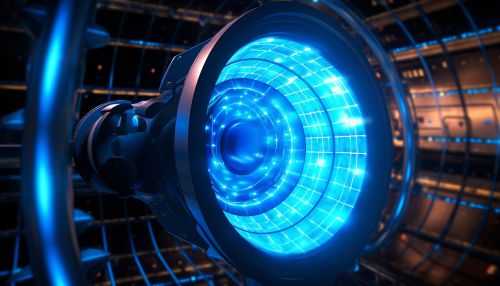Gridded Ion Thruster
Introduction
A gridded ion thruster is a type of electric propulsion system used for spacecraft propulsion. It works by ionizing a neutral gas to form ions, which are then accelerated by an electric field to generate thrust. Gridded ion thrusters are characterized by their high efficiency, long operational lifetimes, and their ability to provide very low thrust for extended periods.


Principle of Operation
The operation of a gridded ion thruster involves several key steps. First, a neutral gas, typically Xenon, is introduced into the discharge chamber. This gas is then ionized, usually by electron bombardment, to form a plasma. The ions in the plasma are then extracted by a system of grids, which are biased with a high voltage. This creates an electric field that accelerates the ions out of the thruster, generating thrust.
Components of a Gridded Ion Thruster
A gridded ion thruster consists of several key components. These include the gas feed system, the discharge chamber, the ionization system, the grid system, and the power supply.
Gas Feed System
The gas feed system is responsible for introducing the neutral gas into the discharge chamber. This is typically done using a gas feed system that includes a gas storage tank, a pressure regulator, and a flow control valve.
Discharge Chamber
The discharge chamber is where the neutral gas is ionized to form a plasma. It is typically a cylindrical or annular space, enclosed by a discharge cathode and an anode.
Ionization System
The ionization system is responsible for ionizing the neutral gas. This is typically done using an electron bombardment system, which uses a hot cathode to emit electrons into the discharge chamber.
Grid System
The grid system is responsible for extracting and accelerating the ions. It typically consists of two or three grids, which are biased with a high voltage to create an electric field.
Power Supply
The power supply provides the electrical power needed for the operation of the thruster. This typically includes a discharge power supply, which provides the power for ionization, and an acceleration power supply, which provides the high voltage for the grid system.
Performance Characteristics
Gridded ion thrusters are characterized by their high efficiency, long operational lifetimes, and their ability to provide very low thrust for extended periods. They are particularly well-suited for missions that require long-duration, low-thrust propulsion, such as station-keeping for satellites, interplanetary missions, and deep space exploration.
Applications
Gridded ion thrusters have been used in a variety of space missions. These include the Deep Space 1 mission, which used a gridded ion thruster for primary propulsion, and the Dawn mission, which used a gridded ion thruster to travel to and orbit the asteroids Vesta and Ceres.
Future Developments
Future developments in gridded ion thruster technology are expected to focus on increasing the thrust level, improving the efficiency, and extending the operational lifetime. This may involve the development of new ionization techniques, the use of alternative propellant gases, and the design of more robust grid systems.
